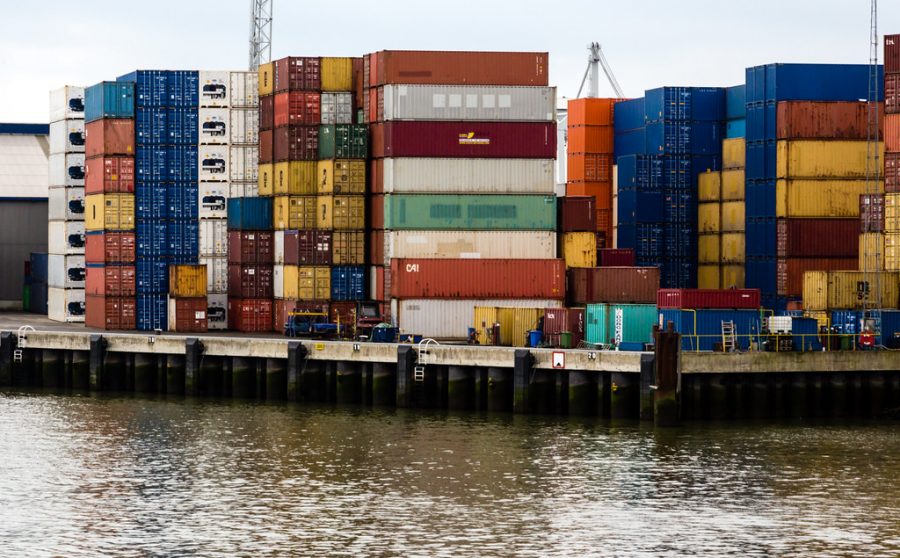Rising shipping costs cause supply chain problems
Daniel Foster | flickr.com
October 8, 2021
When the COVID-19 pandemic started worldwide, the global supply chain took a hit, leading to increased transportation costs. Since then, experts can’t agree on a timeline for when things could be back to normal.
More than 80% of global trade is done over ocean freight. However, companies are opting for alternative transportation methods due to increased shipping costs. A year ago, companies paid about $1,920 to book a 40-foot steel container for shipping. As of today, companies must pay over $14,000 for the same container, seeing more than a 600% increase, according to CNN Business. This increase has been caused by the global shortage of shipping containers as consumer demand has started to pick up once again.
Companies have also suffered on the ground transportation aspect of shipping. Michelin and The Procter & Gamble Company that rely on truck delivery to transport their materials and ship their products are now seeing supply chain problems. This problem stems from the fact that the supply of truck drivers has dwindled, making it more expensive to hire someone today, leading to an increase in fuel prices. In turn, these companies are left with no choice but to raise prices on consumers to cut down on their losses.
“That’s why we had to raise prices for tires,” Florent Menegaux, COO of Michelin, said.
Early in the pandemic, factories were forced to close and major shipping sailings were canceled. These events are where current issues originated from. When China’s exports picked up again, the shipping containers were scattered around the world where they weren’t needed, causing a shortage in the containers available.
New containers were produced to meet huge demand in Europe and North America. However, there is a large material cost associated with the production of these containers. This caused the type of steel used in the manufacturing process to get more expensive, driving up the price of the containers. “It’s a mix of raw material cost, increased labor cost and a very strong supply-demand balance,” John Fossey, head of container equipment and leasing research at Drewry, said.
Since current demand shows no sign of slowing down, ports are working around the clock to get containers in and out to fix backlogs and reduce the delays companies are seeing. While the source of the shipping blockage has been located, many analysts are still wondering when prices are expected to start normalizing to pre-shortage levels. While it’s still unclear, experts are projecting that the congestion ports are facing could drag into the summer of 2022 and even continue through 2023.
“We think at least midway through 2022 or the entire 2022 could be very strong,” Griff Lynch, Executive Director of the Georgia Ports Authority, said.








